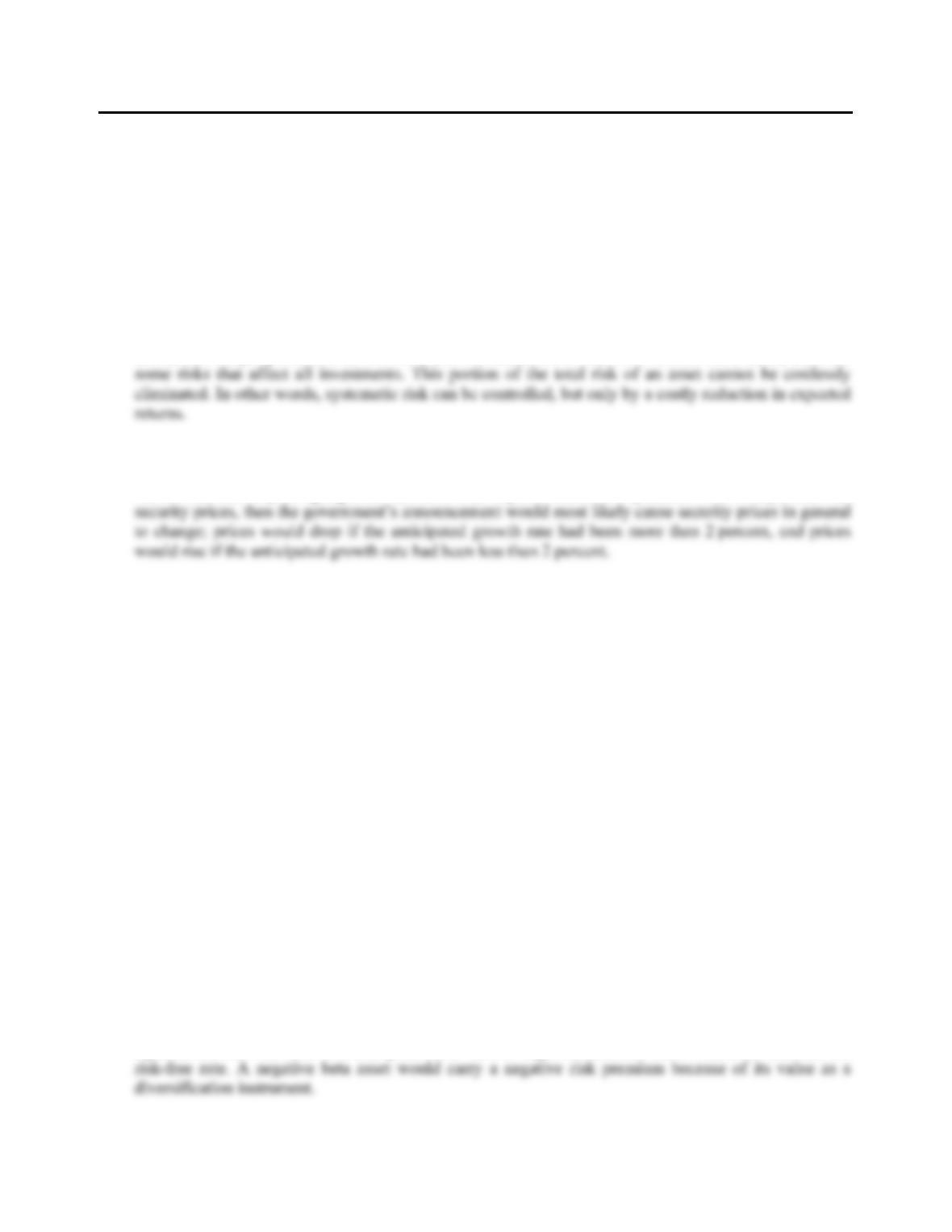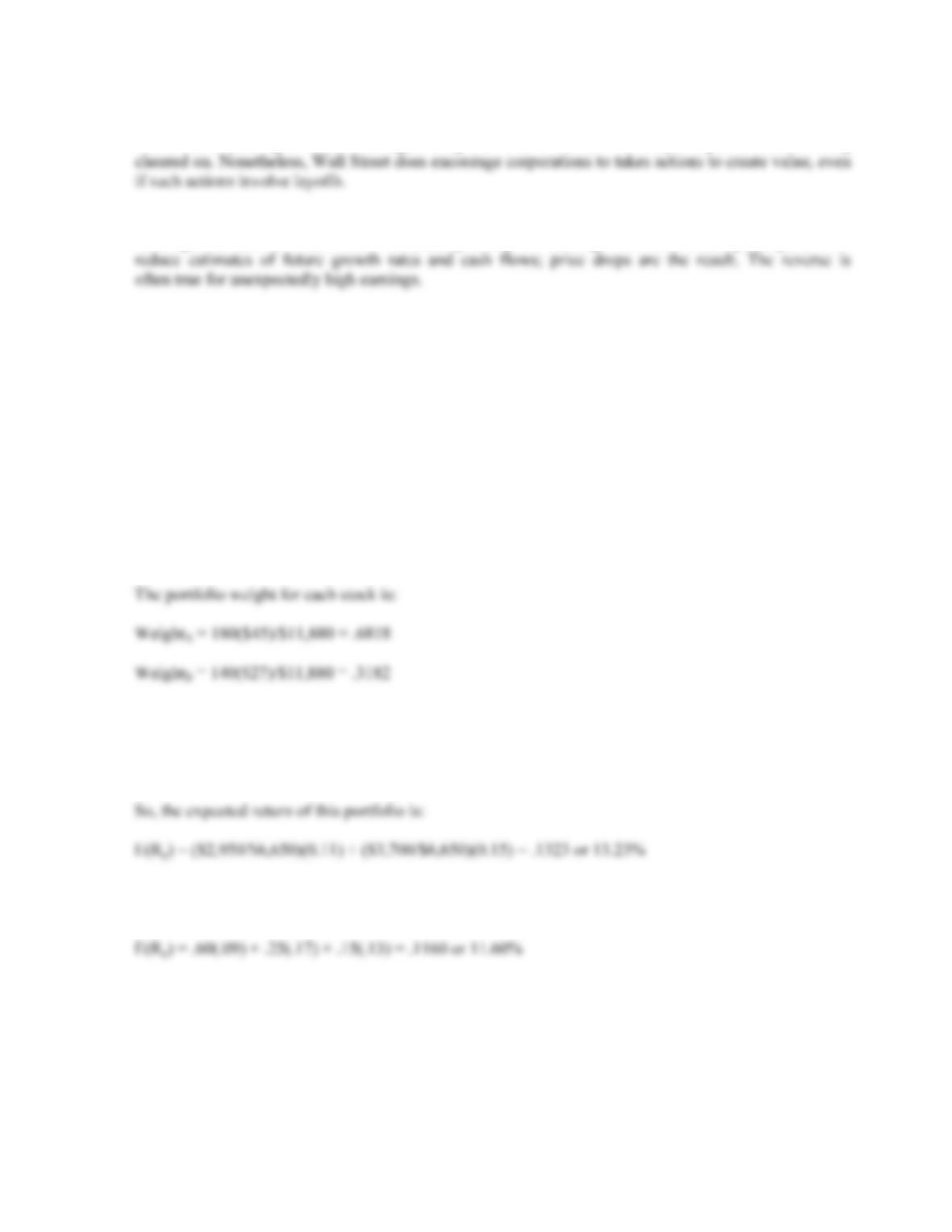CHAPTER 13
RISK, RETURN, AND THE SECURITY
MARKET LINE
Answers to Concepts Review and Critical Thinking Questions
1. Some of the risk in holding any asset is unique to the asset in question. By investing in a variety of
assets, this unique portion of the total risk can be eliminated at little cost. On the other hand, there are
2. If the market expected the growth rate in the coming year to be 2 percent, then there would be no
change in security prices if this expectation had been fully anticipated and priced. However, if the
market had been expecting a growth rate other than 2 percent and the expectation was incorporated into
3. a. systematic
b. unsystematic
c. both; probably mostly systematic
d. unsystematic
e. unsystematic
f. systematic
4. a. a change in systematic risk has occurred; market prices in general will most likely decline.
b. no change in unsystematic risk; company price will most likely stay constant.
c. no change in systematic risk; market prices in general will most likely stay constant.
d. a change in unsystematic risk has occurred; company price will most likely decline.
e. no change in systematic risk; market prices in general will most likely stay constant.
5. No to both questions. The portfolio expected return is a weighted average of the asset returns, so it must
be less than the largest asset return and greater than the smallest asset return.
6. False. The variance of the individual assets is a measure of the total risk. The variance on a well-
diversified portfolio is a function of systematic risk only.
7. Yes, the standard deviation can be less than that of every asset in the portfolio. However, p cannot be
less than the smallest beta because p is a weighted average of the individual asset betas.
8. Yes. It is possible, in theory, to construct a zero beta portfolio of risky assets whose return would be
equal to the risk-free rate. It is also possible to have a negative beta; the return would be less than the



